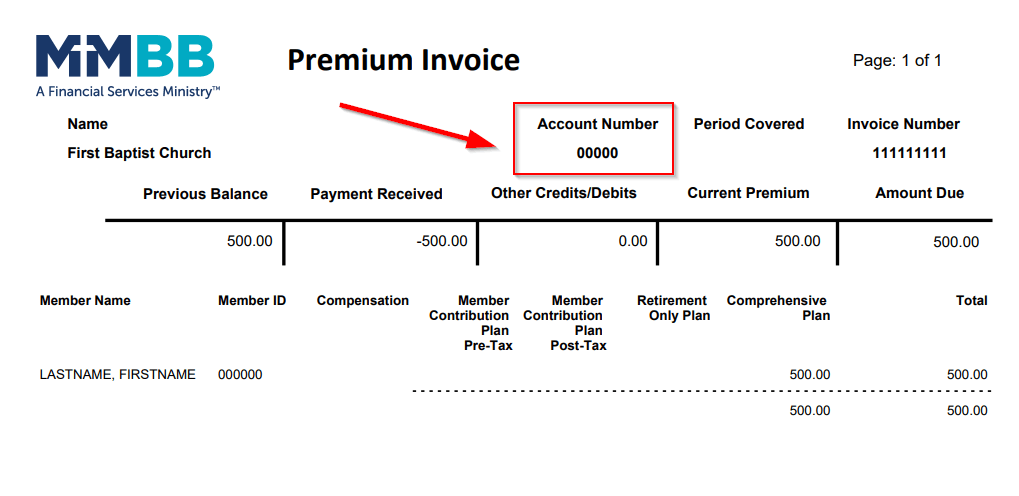The Markets (third quarter through September 30, 2025)
The third quarter of 2025 may best be characterized by continued strength in the equity market, moderating but resilient economic activity, and a shift in the Federal Reserve policy toward interest rate cuts. Gross domestic product rebounded notably from a lackluster opening quarter and corporate earnings grew, while inflationary pressures showed signs of accelerating. Overall, the economy in general, and the stock market in particular, tried to gauge the impact of President Trump's tariffs, which created significant volatility early in the quarter, with major indices briefly hitting bear market territory. However, a subsequent "pause" in some tariff policies and the general resilience of the market allowed equities to rebound sharply, with investors looking past the short-term disruption.
U.S. stocks enjoyed robust growth in the third quarter, with each of the major indexes reaching multiple record highs, despite economic policy uncertainty, primarily focused on the impact of tariffs, and lingering geopolitical risks. Each of the stock market indexes listed here closed higher in the third quarter compared to the previous three-month period. Even the small caps of the Russell 2000 posted significant third-quarter gains, suggesting a broadening of market strength. The ongoing rally was heavily concentrated in the information technology and communication services sectors, driven by AI and megacap tech stocks. Each of the remaining stock market sectors ended the quarter higher, with the exception of consumer staples, which closed the quarter in the red.
In what many believe was the most significant development of the quarter, the Federal Reserve cut the federal funds rate by 25 basis points in September, marking the first rate cut since the end of 2024. Despite the rate cut, inflationary pressures remained a key concern. The Fed's preferred measure of inflation, the personal consumption expenditures (PCE) price index, increased on an annual basis through August, as did the Consumer Price Index (CPI). Both measures of inflation exceeded the Fed's 2.0% target (see below).
While inflation moved higher, the labor market slowed to a near standstill in the third quarter, which likely contributed to the Fed's decision to cut rates. Job growth slowed significantly, the unemployment rate moved higher, while the number of job openings fell to its lowest level since 2021. The number of people receiving unemployment benefits increased by nearly 100,000 over the last 12 months.
Corporate earnings reached new highs in the third quarter. The estimated 12-month earnings growth rate, according to FactSet, is projected to be about 7.9%, which would mark the ninth consecutive quarter of earnings growth for S&P 500 companies. Eight of the 11 market sectors are projected to report year-over-year earnings growth, led by information technology, utilities, materials, and financials. Energy and consumer staples are predicted to show earnings declines. The number of S&P 500 companies expected to show positive earnings per share (EPS) growth for the third quarter is higher than average.
The U.S. economy, as measured by gross domestic product, showed resilience, accelerating at an annualized rate of 3.8%, following a 0.6% contraction in the previous quarter. The U.S. real estate market continued to be impacted by relatively high interest rates, low inventory, and rising home prices. However, August (the most recent data available) showed home prices began to fall and inventory increased. Mortgage interest rates started to decline, with Fannie Mae forecasting 30-year fixed mortgage rates to end 2025 and 2026 at 6.4% and 5.9%, respectively.
Crude oil prices fluctuated somewhat throughout the third quarter, with prices moving from about $70.00 per barrel in July to $62.50 per barrel in September. The downward trend in crude oil prices was linked to concerns about softening global demand, projections of increasing supply, and geopolitical unrest, particularly regarding the Ukraine/Russia war. The retail price for regular gasoline was $3.173 per gallon on September 22, $0.026 above the price a month earlier but $0.012 below the price from a year ago.
MARKET SUMMARY
| MARKET/INDEX |
2024 CLOSE |
AS OF 9/30 |
MONTHLY CHANGE |
QUARTERLY CHANGE |
YTD CHANGE |
| DJIA |
42,544.22 |
46,397.89 |
1.87% |
5.22% |
9.06% |
| NASDAQ |
19,310.79 |
22,660.01 |
5.61% |
11.24% |
17.34% |
| S&P 500 |
5,881.63
|
6,688.46 |
3.53% |
7.79% |
13.72% |
| RUSSELL 2000 |
2,230.16 |
2,436.48 |
2.96% |
12.02% |
9.25% |
| GLOBAL DOW |
4,863.01 |
5,917.39 |
3.15% |
7.22% |
21.68% |
| FED. FUNDS |
4.25%-4.50% |
4.00%-4.25% |
-25 bps |
-25 bps |
-25 bps |
| 10-YEAR TREASURIES |
4.57% |
4.14% |
-8 bps |
-9 bps |
-43 bps |
| US DOLLAR-DXY |
108.44 |
97.82 |
0.03% |
1.05% |
-9.79% |
| CRUDE OIL-CL=F |
$71.76 |
$62.51 |
-2.34% |
-3.96% |
-12.89% |
| GOLD-GC=F |
$2,638.50 |
$3,882.60 |
10.40% |
16.97% |
47.15% |
Chart reflects price changes, not total return. Because it does not include dividends or splits, it should not be used to benchmark performance of specific investments.
Latest Economic Reports
- Employment: The latest employment report for August showed the labor market continued to weaken. Job growth ticked up 22,000 last month following an upwardly revised July increase of only 79,000. However, employment for June was also revised down by 27,000, from 14,000 to -13,000. With these revisions, employment in June and July combined was 21,000 lower than previously reported. In August, the unemployment rate ticked up 0.1 percentage point to 4.3%. The number of unemployed persons in August, at 7.4 million, was 148,000 above the July estimate. The number of long-term unemployed (those jobless for 27 weeks or more) increased by 104,000 to 1.9 million. These individuals accounted for 25.7% of all unemployed persons. The labor force participation rate in August rose 0.1 percentage point from July to 62.3%. The employment-population ratio in August, at 59.6%, was unchanged from the July estimate. Average hourly earnings increased by $0.10, or 0.3%, to $36.53 in August. Over the last 12 months, average hourly earnings rose by 3.7%, 0.2 percentage point below the 12-month average for the period ended in July. The average workweek in August was 34.2 hours for the third month in a row.
- There were 218,000 initial claims for unemployment insurance for the week ended September 20, 2025. During the same period, the total number of workers receiving unemployment insurance was 1,926,000. A year ago, there were 221,000 initial claims, while the total number of workers receiving unemployment insurance was 1,831,000.
- FOMC/interest rates: As expected, the Federal Open Market Committee cut the fed funds target rate range by 25 basis points to 4.00%-4.25%. In reaching its decision, the Committee indicated that it was trying to balance conflicting risks, with the downside risks to employment having risen, while inflationary pressures remained somewhat elevated. The FOMC projected more rate cuts this year and in 2026.
- GDP/budget: The economy, as measured by gross domestic product, advanced at an annualized rate of 3.8% in the second quarter, rebounding from a 0.6% decrease in the first quarter of 2025. Consumer spending, as measured by personal consumption expenditures, helped propel the second-quarter increase, climbing 2.5% after ticking up 0.6% in the first quarter. Spending rose for both services (2.6%) and goods (2.2%). After surging 38.0% in the first quarter, imports (which are a negative in the calculation of GDP) fell 29.3% in the second quarter. However, exports also declined in the second quarter, falling 1.8%, offsetting a 0.2% advance in the first quarter. Private investment declined 13.8% in the second quarter, cutting into the 23.3% gain in the prior quarter.
- August saw the federal budget register a deficit of $345 billion. August has registered a deficit 70 times out of 71 fiscal years since there are usually no major corporate or individual tax due dates in that month. August receipts were $344 billion versus $307 billion a year ago. Customs duties (e.g., tariffs) added $30 billion to receipts in August and are up 137% compared to a year ago. Government outlays in August were $689 billion versus $687 billion a year ago. The deficit through the first 11 months of fiscal year 2025, at $1,973 billion, was above the $1,897 billion deficit over the first 11 months of the previous fiscal year. Thus far for fiscal year 2025, individual income tax receipts added up to $2,358 billion, while outlays for Social Security totaled $1,447 billion.
-
Inflation/consumer spending: According to the latest Personal Income and Outlays report, personal income and disposable (after-tax) personal income each rose 0.4% in August after increasing 0.4% and 0.3%, respectively, in July. Consumer spending increased 0.6% in August after rising 0.5% the previous month. In August, the PCE price index rose 0.3% after increasing 0.2% in July. Core prices advanced 0.2% last month, unchanged from the July estimate. The PCE price index rose 2.7% since August 2024, while core prices increased 2.9% over the same period. Over the past 12 months ended in August, prices for goods increased 0.9% and prices for services rose 3.6%. Food prices increased 2.2%, while energy prices decreased 0.1%.
-
The Consumer Price Index rose 0.4% in August after increasing 0.2% in July. Over the 12 months ended in August, the CPI rose 2.9%, 0.2 percentage point higher than the 12-month period ended in July. Core prices rose 0.3% last month and 3.1% since August 2024. The primary factor in the August increase was a 0.4% rise in prices for shelter. Food prices rose 0.5% last month from July. Energy prices increased 0.7% in August as gasoline prices rose 1.9% over the month. Over the last 12 months ended in August, food prices increased 3.2%, energy prices rose 0.2%, and shelter prices advanced 3.6%.
-
Prices at the wholesale level have been somewhat unpredictable this year. In August, the Producer Price Index declined 0.1% after advancing 0.7% (revised) in July. Producer prices increased 2.6% for the 12 months ended in August after rising 3.1% for the 12-month period ended in July. Excluding food and energy, producer prices dipped 0.1% in August but increased 2.8% for the year. In August, prices for goods edged up 0.1% from the previous month and 2.1% since August 2024. Last month saw prices for services decline 0.2% after a 0.7% increase in July. Prices for services rose 2.9% for the 12 months ended in August, lower than the 4.0% increase over the 12 months ended in July.
-
Housing: Sales of existing homes decreased 0.2% in August but were up 1.8% from a year earlier. The median existing-home price was $422,600 in August, lower than the July price of $425,700 but above the August 2024 estimate of $414,200. Unsold inventory of existing homes in August represented a 4.6-month supply at the current sales pace, unchanged from the July total but above the 4.2-month supply from a year ago. Sales of existing single-family homes fell 0.3% in August but were 2.5% above the August 2024 figure. The median existing single-family home price was $427,800 in August ($432,000 in July), higher than the August 2024 estimate of $419,800.
-
Sales of new single-family homes jumped higher in August, exceeding expectations, although inventory of available new homes for sale plunged lower from the previous month. Sales of new single-family homes rose 20.5% in August and were 15.4% above the August 2024 figure. The median sales price of new single-family houses sold in August was $413,500 ($395,100 in July), which was higher than the August 2024 estimate of $405,800. The August average sales price was $534,100 ($478,200 in July), up from the August 2024 average sales price of $475,600. Inventory of new single-family homes for sale in August represented a supply of 7.4 months at the current sales pace, 17.8% below the July estimate of 9.0 months and is 9.8% below the August 2024 estimate of 8.2 months.
-
Manufacturing: Industrial production edged up 0.1% in August after decreasing 0.4% in July. Manufacturing output rose 0.2% last month after edging down 0.1% in July. Within manufacturing, the production of motor vehicles and parts increased 2.6% in August, while factory output elsewhere edged up 0.1%. Mining moved up 0.9%, while utilities decreased 2.0%. Total industrial production was up 0.9% since August 2024.
-
New orders for durable goods rose 2.9% in August after decreasing 2.7% in July. Transportation equipment drove the August increase after climbing 7.9%. New orders excluding transportation increased 0.4%. Excluding defense, new orders increased 1.9%. For the 12 months ended in August, durable goods orders advanced 7.1%.
-
Imports and exports: Both import and export prices came in higher than expected in August. Import prices advanced 0.3% last month following a 0.2% decrease in July. Prices for imports were flat for the 12 months ended in August. Higher prices for nonfuel imports more than offset lower prices for fuel imports in August. Import fuel prices fell 10.1% over the past 12 months. Prices for nonfuel imports advanced 0.4% in August, the largest monthly advance since April 2024. Export prices rose 0.3% in August after rising 0.1% the previous month. Export prices increased 3.4% over the past 12 months, the largest 12-month increase since December 2022.
-
The international trade in goods deficit for August was $85.5 billion, 16.8% under the July estimate. Exports of goods for August dipped 1.3%, while imports of goods declined 7.0%. Over the 12 months ended in August, exports decreased 0.4% and imports fell 4.1%.
-
The latest information on international trade in goods and services, released September 4, saw the goods and services deficit increase 32.5% in July to $78.3 billion. Exports of goods increased 0.3% to $280.5 billion in July. Imports of goods rose 5.9% to $358.8 billion. For the 12 months ended in July 2025, the goods and services deficit increased $154.3 billion, or 30.9%, from the same period in 2024. Exports increased $103.1 billion, or 5.5%. Imports increased $257.5 billion, or 10.9%.
-
International markets: September saw the global economy and stock markets largely driven by the ongoing effects of new trade policies, evolving central bank strategies, and persistent inflation concerns. Shifts in trade policy, particularly stemming from higher U.S. tariffs on a broad range of imports, prompted companies to accelerate shipments ("front-loading") in the first half of the year, which temporarily boosted trade figures but the effects of the actual tariffs began to increasingly weigh on global industrial production and trade in September. The eurozone economy maintained a modest growth pace, with services activity driving the increase, although manufacturing was slower, while inflation accelerated. Economic indicators in China pointed to weakness as the boost from front-loading trade activities unwound, higher tariffs took effect, and weakness in the real estate market persisted. In September, the STOXX Europe 600 Index rose 2.7%; the United Kingdom's FTSE advanced 2.6%; Japan's Nikkei 225 Index gained 6.2%; and China's Shanghai Composite Index ticked up 0.6%.
-
Consumer confidence: Consumer confidence fell 3.6 points in September to 94.2 from 97.8 in August. The Present Situation Index, based on consumers' assessment of current business and labor market conditions, decreased 7.0 points to 125.4. The Expectations Index, based on consumers' short-term outlook for income, business, and labor market conditions, decreased 1.3 points to 73.4. The Expectations Index has been below the threshold of 80 (typically signaling a recession ahead) since February 2025.
Eye on the Quarter Ahead
October begins the last quarter of the year and brings with it plenty of important, potentially-market-moving, information. The employment sector has slowed considerably over the past several months. The first estimate of gross domestic product for the third quarter is out at the end of the month. The economy grew at about 3.3% in the second quarter. The Federal Open Market Committee meets at the end of the month for the second to the last time in 2025. The Committee decided to reduce interest rates in September and indicated that there is a likelihood for at least one more rate reduction before the end of the year.
Data sources: Economic: Based on data from U.S. Bureau of Labor Statistics (unemployment, inflation);
U.S. Department of Commerce (GDP, corporate profits, retail sales, housing); S&P/Case-Shiller 20-City Composite Index (home prices); Institute for Supply Management (manufacturing/services). Performance: Based on data reported in WSJ Market Data Center (indexes); U.S. Treasury (Treasury yields); U.S. Energy Information Administration/Bloomberg.com Market Data (oil spot price, WTI Cushing, OK); www.goldprice.org (spot gold/silver); Oanda/FX Street (currency exchange rates). News items are based on reports from multiple commonly available international news sources (i.e., wire services) and are independently verified when necessary with secondary sources such as government agencies, corporate press releases, or trade organizations. All information is based on sources deemed reliable, but no warranty or guarantee is made as to its accuracy or completeness. Neither the information nor any opinion expressed herein constitutes a solicitation for the purchase or sale of any securities, and should not be relied on as financial advice. Forecasts are based on current conditions, subject to change, and may not come to pass. U.S. Treasury securities are guaranteed by the federal government as to the timely payment of principal and interest. The principal value of Treasury securities and other bonds fluctuates with market conditions. Bonds are subject to inflation, interest-rate, and credit risks. As interest rates rise, bond prices typically fall. A bond sold or redeemed prior to maturity may be subject to loss. Past performance is no guarantee of future results. All investing involves risk, including the potential loss of principal, and there can be no guarantee that any investing strategy will be successful.
The Dow Jones Industrial Average (DJIA) is a price weighted index composed of 30 widely traded blue-chip U.S. common stocks. The S&P 500 is a market cap weighted index composed of the common stocks of 500 largest, publicly traded companies in leading industries of the U.S. economy. The NASDAQ Composite Index is a market-value weighted index of all common stocks listed on the NASDAQ stock exchange. The Russell 2000 is a market-cap weighted index composed of 2,000 U.S. small-cap common stocks. The Global Dow is an equally weighted index of 150 widely traded blue-chip common stocks worldwide. The U.S. Dollar Index is a geometrically weighted index of the value of the U.S. dollar relative to six foreign currencies. Market indexes listed are unmanaged and are not available for direct investment.
IMPORTANT DISCLOSURES
Broadridge Investor Communication Solutions, Inc. does not provide investment, tax, legal, or retirement advice or recommendations. The information presented here is not specific to any individual’s personal circumstances.
To the extent that this material concerns tax matters, it is not intended or written to be used, and cannot be used, by a taxpayer for the purpose of avoiding penalties that may be imposed by law. Each taxpayer should seek independent advice from a tax professional based on his or her individual circumstances.
These materials are provided for general information and educational purposes based upon publicly available information from sources believed to be reliable — we cannot assure the accuracy or completeness of these materials. The information in these materials may change at any time and without notice.








